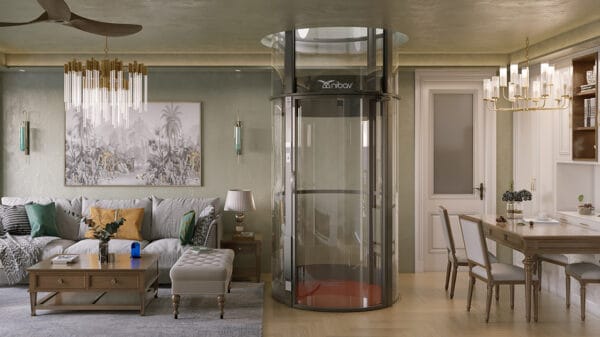Our world is quickly gaining awareness of how we affect our environment and the resources we use. A large part of that issue is energy. Where do we get it and how do we use it? While asking these questions, we should start by being aware of the energy we use right at home. There is a constant battle between incandescent, LED, and fluorescent lighting, but once research is done, it is clear that LED lights are the best choice for any area that needs lighting.
To understand where the problem with lighting begins, you have to take each form of energy apart. The incandescent light bulb was the first to be invented back in the 1860’s by Joseph Swan and Thomas Edison. Swan created the filaments that conducted the lights with carbonized paper, but Edison used carbonized sewing thread and was able to get it inside the vacuum that is the inside of a light bulb. The sewing thread made it more efficient, which is why he was, accredited the invention of the light bulb instead of Swan.
Today there is no sewing thread involved but the production of the energy is just as rudimentary. Very little has changed about the incandescent light bulb since the early 1880’s. There’s the metal end of the light bulb that plugs or screws into the electrical source. The metal is attached to a piece of tungsten inside the bulb, which is also called the filament. The filament is surrounded by a vacuum or gas, and when electricity passes through all of this, the bulb glows. The heat is the main factor in what makes the bulb shine. That’s where this source of energy fails the consumers. 90% of the money spent on the energy used by this kind of lighting goes to pay for the heat alone.
Only ten percent of your electricity bill pays for the actual light. This is an obvious failure for the pockets of anyone using these bulbs, but there is another area of weakness. The light produced, the ten percent you pay for, is weak light that can only cover small areas. The only benefits of incandescent lighting is that it is cheap to buy the actual bulb, but that means it’s also cheaper to produce and more expensive for your monthly electric bill.


The second common form of lighting is florescent light. These bulbs are much larger and longer than incandescent bulbs and are most commonly found in offices or schools, although they do come smaller every year. They can be bought for tiny areas in the form of CFL bulbs. These look like spirals compared to the typical light bulb shape of incandescent bulbs. Florescent light produces ultraviolet rays, creating a stronger light to cover larger areas. The bulb contains mercury vapor and has exposed electrodes on each end. When electricity passes through the electrodes, electrons are created that, when combined with the mercury, produce stronger, brighter light than incandescent bulbs. There are a couple different aspects to this form that are unique. Florescent light has to pass through florescent light ballast, which regulates the energy that passes through the electrodes so the lamp doesn’t burn out fast. These can short out and be replaced, which needs to be taken into consideration when looking at cost. Another different aspect is that when a bulb is burnt out and needing to be replaced, you can’t throw it away in a trash can like you would with an incandescent bulb. Florescent light bulbs need to be recycled, and not all recycling centers accept them. That would need to be researched before purchasing florescent lighting for a home or office.
After learning about the previous two forms of lighting, we arrive at our third option, LEDs. LED stands for Light Emitting Diode, and is made of just a semiconductor. The use of just the semiconductor allows for little to no heat to be involved in the process of creating light. This lowers the risk of overheating an area, causing fires, or making you burn your fingers removing the bulb. It also means the bulb can be made of more sturdy material, making it less likely to break than incandescent bulbs. Since the electricity is more immediately introduced into creating light and not heat, it consumes less energy, lowers electricity bills and is better for the environment because of this feature. The bulbs also last longer than incandescent lights (1500 hours per incandescent light bulb and 60,000 per LED). A smaller but not any less insignificant feature that makes LED lighting a better choice is that it can come in much smaller bulb sizes but maintain the powerful light quality. The strong light that it produces can be used for refrigerator lights, Christmas lights, bedroom decorations, or even floodlights. The U.S. Department of Energy was quoted saying that “no other lighting technology offers as much potential to save energy and enhance the quality of our building environments.” LED lights are versatile and long lasting, making them the obvious choice for any area that needs light.
 So why should you choose LED lighting over CFL lights? If you struggle with high electricity bills or wonder why your living room takes four lamps just to allow you to see across the room then LED lighting is an option you should consider. A typical 60 watt LED bulb at Home Depot costs forty-five dollars, but will last nine to ten years and still cut down your bills. It’s more money up front but a definite investment in where your money will go for the next decade. Are you concerned about how our energy consumption is affecting the environment? LED light bulbs do not contain mercury and will cut down carbon dioxide emissions by 4,049 pounds per year for just one LED bulb (compared to incandescent bulbs). Need stronger lighting? LED is the way to go because of its semiconductor. No matter what your concern is, LED lighting is the way you should start thinking to maximize the benefits you get from the light bulbs you buy.
So why should you choose LED lighting over CFL lights? If you struggle with high electricity bills or wonder why your living room takes four lamps just to allow you to see across the room then LED lighting is an option you should consider. A typical 60 watt LED bulb at Home Depot costs forty-five dollars, but will last nine to ten years and still cut down your bills. It’s more money up front but a definite investment in where your money will go for the next decade. Are you concerned about how our energy consumption is affecting the environment? LED light bulbs do not contain mercury and will cut down carbon dioxide emissions by 4,049 pounds per year for just one LED bulb (compared to incandescent bulbs). Need stronger lighting? LED is the way to go because of its semiconductor. No matter what your concern is, LED lighting is the way you should start thinking to maximize the benefits you get from the light bulbs you buy.

1 Comment
Leave a Reply
Cancel reply
Leave a Reply
This site uses Akismet to reduce spam. Learn how your comment data is processed.


















































































































































































Aaron C.
August 9, 2017 at 4:57 pm
I really like Edison but he did everything he could to push Tesla aside. Tesla knew that AC was much more sustainable, but DC provided more money due to the short acting nature. Thanks for writing!